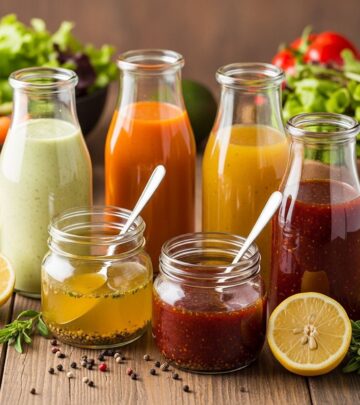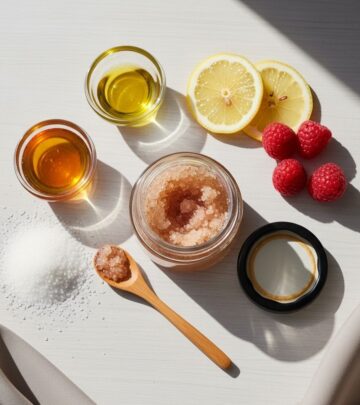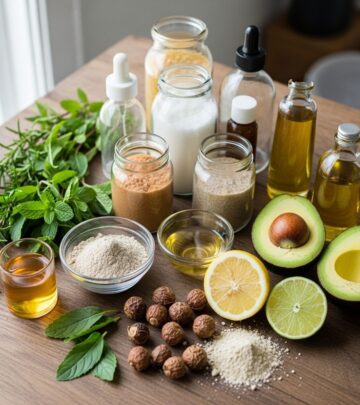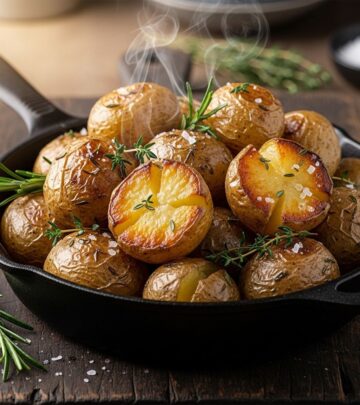Sweet And Sour Sauce Recipe: 8 Easy Steps For Authentic Flavor
Master the art of making the perfect sweet and sour sauce with this simple yet delicious recipe
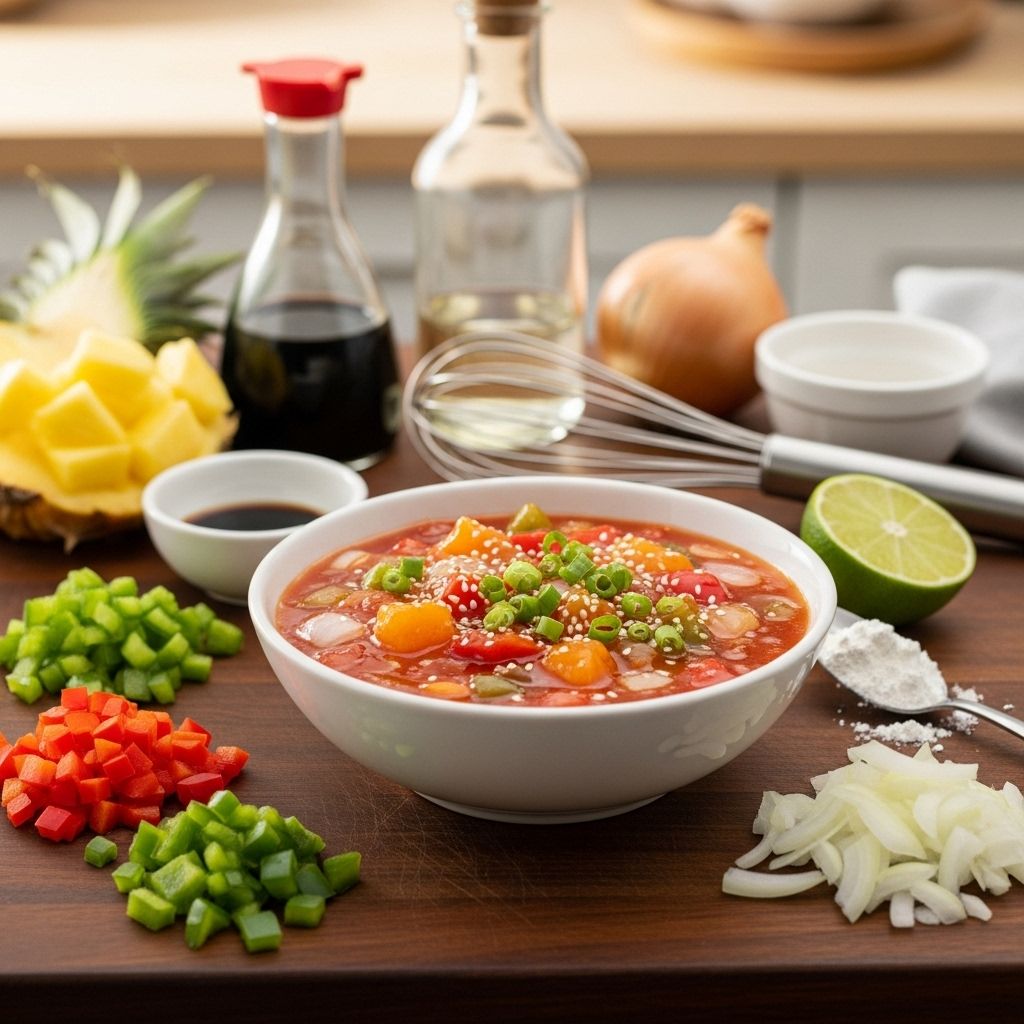
Image: HearthJunction Design Team
The Perfect Sweet and Sour Sauce Recipe
Sweet and sour sauce is a culinary masterpiece that balances contrasting flavors to create a harmonious blend that tantalizes the taste buds. This iconic condiment is a staple in Asian cuisine, particularly Chinese cooking, where it has been perfected over centuries. The beauty of this sauce lies in its simplicity and the perfect equilibrium between sweetness and tanginess that makes it an ideal companion for numerous dishes.
Making sweet and sour sauce at home is surprisingly easy and infinitely better than store-bought versions. With just a handful of basic ingredients that you likely already have in your pantry, you can create a sauce that’s free from preservatives and artificial colors while delivering that authentic flavor you crave. This homemade version allows you to customize the sweetness and sourness to your preference, ensuring it complements your dishes perfectly.
This recipe produces a sauce with the ideal consistency – not too thick or too runny – that coats your food beautifully without overpowering it. The vibrant color and glossy finish make it visually appealing, while its balanced flavor profile makes it versatile enough to use in various culinary applications.
Essential Ingredients for Sweet and Sour Sauce
The magic of sweet and sour sauce comes from the careful balance of simple ingredients that work together to create a complex flavor profile. Each component plays a crucial role in developing the characteristic taste and texture that makes this sauce so beloved worldwide. Here’s what you’ll need to create this delicious condiment:
- White Sugar (¾ cup): The primary sweetening agent that provides the foundation of sweetness in the sauce. The granulated sugar also helps create the right consistency when dissolved and caramelized slightly during cooking.
- Water (⅔ cup): Forms the liquid base of the sauce and helps dissolve the sugar and other ingredients, creating a smooth consistency.
- White Vinegar (⅓ cup): Delivers the essential tangy “sour” component that balances the sweetness. White vinegar is preferred for its clean, sharp acidity and transparent color that won’t affect the sauce’s appearance.
- Soy Sauce (¼ cup): Adds depth, umami flavor, and a slight saltiness that rounds out the sweetness and sourness. It also contributes to the sauce’s rich color.
- Cornstarch (2 tablespoons): Acts as a thickening agent, giving the sauce its characteristic glossy appearance and proper consistency that clings beautifully to food.
- Ketchup (1 tablespoon): Provides both color and flavor, adding a subtle tomato undertone and contributing to the vibrant reddish-orange hue that’s typical of sweet and sour sauce.
The beauty of these ingredients is their accessibility – most are common pantry staples that you likely already have on hand. This makes it possible to whip up a batch of sweet and sour sauce whenever the craving strikes, without a special trip to the grocery store.
Step-by-Step Preparation Method
Creating the perfect sweet and sour sauce is all about technique and timing. Follow these detailed steps to ensure your sauce achieves the ideal flavor balance and consistency every time:
1. Prepare Your Workspace
Before you begin, gather all your ingredients and measuring tools. Having everything ready and within reach makes the cooking process smoother, as this sauce comes together quickly once you start.
2. Combine the Base Ingredients
In a medium saucepan, combine the water, white sugar, white vinegar, and soy sauce. This forms the liquid foundation of your sauce. Use a whisk to mix these ingredients thoroughly, ensuring the sugar is fully incorporated into the liquid.
3. Create the Cornstarch Slurry
In a small bowl, mix the cornstarch with a tablespoon of cold water to create a slurry. This extra step prevents lumps from forming when the cornstarch is added to the hot liquid. Stir until the cornstarch is completely dissolved and the mixture has a smooth, milky appearance.
4. Heat the Mixture
Place the saucepan over medium heat and bring the liquid mixture to a gentle simmer, stirring occasionally. Allow the sugar to dissolve completely and the mixture to heat evenly. This should take approximately 3-5 minutes.
5. Add the Ketchup
Once the mixture is simmering, add the tablespoon of ketchup and whisk until fully incorporated. The sauce will begin to take on its characteristic color at this stage.
6. Thicken the Sauce
While whisking constantly, slowly pour the cornstarch slurry into the simmering sauce. This gradual addition while stirring prevents lumps from forming and ensures even thickening throughout the sauce.
7. Simmer to Perfect Consistency
Continue to cook the sauce, stirring frequently, for about 5-7 minutes until it thickens noticeably. The sauce is ready when it coats the back of a spoon and leaves a clear path when you run your finger through it. Remember that the sauce will thicken further as it cools, so don’t overcook it.
8. Cool and Store
Remove the sauce from heat and allow it to cool slightly before using. If storing for later use, let it cool completely before transferring to an airtight container. The sauce will keep in the refrigerator for up to two weeks.
Variations and Customizations
One of the joys of making sweet and sour sauce at home is the ability to customize it to suit your preferences or to complement specific dishes. Here are some popular variations that you might want to experiment with:
Pineapple Sweet and Sour Sauce
For a tropical twist, add ¼ cup of pineapple juice and 2 tablespoons of crushed pineapple to the base recipe. This variation adds a natural sweetness and fruity complexity that pairs beautifully with pork and chicken dishes.
Spicy Sweet and Sour
Add a kick to your sauce by incorporating 1-2 teaspoons of sriracha or 1/4 teaspoon of red pepper flakes. The heat contrasts wonderfully with the sweetness, creating an even more complex flavor profile that’s perfect for those who enjoy a little spice.
Ginger-Infused Version
Add 1 tablespoon of freshly grated ginger or 1/2 teaspoon of ground ginger to the sauce while it simmers. This adds a warm, aromatic quality that enhances the sauce’s complexity and makes it particularly suitable for seafood dishes.
Garlic Sweet and Sour
Incorporate 1-2 cloves of minced garlic or 1/2 teaspoon of garlic powder for an additional layer of flavor. The garlic adds depth and a subtle savory note that complements the sweet-sour balance.
Lower-Sugar Option
For a less sweet version, reduce the sugar to 1/2 cup and add 2 tablespoons of honey or maple syrup. This creates a more nuanced sweetness with additional flavor notes while reducing the overall sugar content.
Culinary Applications and Serving Suggestions
Sweet and sour sauce is incredibly versatile and can elevate a wide variety of dishes. Here are some classic and creative ways to incorporate this flavorful condiment into your cooking:
Classic Pairings
- Sweet and Sour Chicken or Pork: The most traditional application, where battered and fried meat is tossed in the sauce along with bell peppers, onions, and pineapple chunks.
- Dipping Sauce: Serve in small bowls alongside egg rolls, spring rolls, wontons, or chicken nuggets for a delicious appetizer or snack.
- Glazed Meatballs: Toss cooked meatballs (beef, pork, or turkey) in warm sweet and sour sauce for a quick and impressive party appetizer.
Creative Uses
- Stir-Fry Finish: Add a few tablespoons to any vegetable or protein stir-fry in the final minute of cooking for a flavorful glaze.
- Marinade Base: Combine with a little oil and additional soy sauce to create a marinade for grilled meats, especially pork and chicken.
- Sandwich Spread: Mix with a bit of mayonnaise for a tangy spread that works beautifully on burgers and deli sandwiches.
- Salad Dressing: Whisk with olive oil for an unconventional but delicious salad dressing, particularly good with Asian-inspired salads.
- Glazed Vegetables: Brush onto roasted vegetables like carrots, sweet potatoes, or Brussels sprouts in the last few minutes of cooking for a caramelized finish.
Storage and Shelf Life
Proper storage is essential to maintain the quality and safety of your homemade sweet and sour sauce. Follow these guidelines to ensure your sauce stays fresh and delicious:
Refrigeration
Store your cooled sweet and sour sauce in an airtight container in the refrigerator. Glass jars with tight-fitting lids work particularly well and won’t stain from the sauce’s color. Properly stored, the sauce will maintain its quality for up to two weeks. You may notice some separation after several days – this is normal and can be resolved with a quick stir before using.
Freezing Option
For longer storage, sweet and sour sauce freezes remarkably well. Pour the cooled sauce into freezer-safe containers, leaving about half an inch of headspace to allow for expansion. Alternatively, freeze in ice cube trays for convenient single-serving portions. Frozen sweet and sour sauce will maintain good quality for up to three months. Thaw overnight in the refrigerator before using.
Reheating Tips
When reheating refrigerated or thawed sauce, warm it gently over low heat, stirring frequently. If the sauce has thickened too much during storage, whisk in a tablespoon or two of water to restore its original consistency. Avoid boiling the sauce vigorously as this can break down its texture.
Nutritional Information and Dietary Considerations
While sweet and sour sauce is delicious, it’s helpful to be aware of its nutritional profile, especially if you’re monitoring your diet. Here’s what you should know about this condiment:
Basic Nutritional Profile
A typical two-tablespoon serving (approximately 30ml) of this homemade sweet and sour sauce contains roughly:
- Calories: 50-60
- Carbohydrates: 12-15g
- Sugars: 10-12g
- Protein: Less than 1g
- Fat: 0g
- Sodium: 200-300mg
Dietary Adaptations
For those with specific dietary needs, the basic sweet and sour sauce recipe can be modified in several ways:
- Gluten-Free Version: Substitute the regular soy sauce with tamari or certified gluten-free soy sauce to make the recipe suitable for those with celiac disease or gluten sensitivity.
- Lower Sodium Option: Use low-sodium soy sauce and reduce the amount to 2-3 tablespoons to decrease the overall salt content.
- Vegan/Vegetarian: The basic recipe is already vegan and vegetarian-friendly, making it a versatile option for plant-based diets.
- Sugar Alternatives: For those monitoring sugar intake, consider using a sugar substitute like stevia, monk fruit sweetener, or erythritol. Start with about half the amount as these alternatives tend to be sweeter than regular sugar.
Frequently Asked Questions (FAQs)
Q: Why is my sweet and sour sauce too thin?
A: If your sauce isn’t thickening properly, you may need to adjust the cornstarch ratio. Create another small slurry with 1 teaspoon cornstarch and 1 tablespoon cold water, then slowly whisk it into the simmering sauce. Continue cooking for a few more minutes to activate the thickening properties.
Q: Can I make sweet and sour sauce without ketchup?
A: Yes, you can substitute the ketchup with 1 tablespoon of tomato paste plus a pinch of sugar, or omit it altogether for a clearer, golden-colored sauce that still delivers the sweet and sour flavor profile.
Q: How can I fix a sauce that’s too sweet?
A: Add more vinegar or a squeeze of fresh lemon juice, starting with 1 teaspoon at a time, until the desired balance is achieved. You can also add a pinch more salt or an extra dash of soy sauce to help counter excessive sweetness.
Q: Why did my sauce turn cloudy after refrigeration?
A: This is typically due to the cornstarch breaking down slightly when chilled. Gently reheating the sauce while whisking should restore its clarity and smooth texture.
Q: Can I use apple cider vinegar instead of white vinegar?
A: Yes, apple cider vinegar can be substituted for a slightly different flavor profile. It adds fruitier notes to the sauce but may slightly alter the color to a deeper amber shade.
Q: Is homemade sweet and sour sauce healthier than store-bought?
A: Generally yes, as homemade versions allow you to control the ingredients, avoiding preservatives, artificial colors, and excessive sodium often found in commercial products. You can also adjust the sugar content to suit your dietary preferences.
Sweet and sour sauce is a versatile condiment that brings excitement and balanced flavor to countless dishes. By making it at home, you gain control over the ingredients and can customize it to your taste preferences. Whether you’re using it as a dipping sauce, a glaze, or a cooking ingredient, this homemade version will elevate your culinary creations and impress your family and friends with its authentic taste and perfect consistency.
References
- https://www.allrecipes.com/recipe/19670/sweet-and-sour-sauce-i/
- https://www.allrecipes.com/recipe/247116/pineapple-sweet-and-sour-sauce/
- https://www.allrecipes.com/recipe/223188/wow-sweet-and-sour-sauce/
- https://www.allrecipes.com/recipe/24246/sweet-and-sour-sauce-ii/
- https://www.allrecipes.com/recipe/238127/an-easy-as-pie-sweet-and-sour-sauce-no-red-sauce-heregolden/
Read full bio of Shinta

